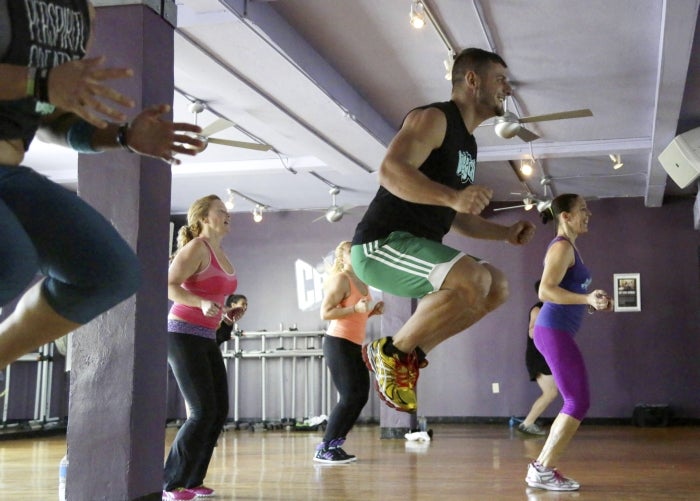Ester Marsh: Do these knee problems sound familiar?
Published 12:00 am Monday, April 6, 2015

- Frequent heavy workouts like this Cutthroat Cardio class may cause knee problems for some. (AP photo)
Did you start exercising and your knees are acting up?
There are many issues that can cause knee pain. I am going through the most common overuse injuries and remember that a doctor needs to diagnose the problem.
So let’s first look at some overuse knee problems:
- Patellar tendonitis: Is also called “jumper’s knee.” Athletes such as basketball and volleyball players often struggle with this when dealing with knee pain. This tendon connects the knee cap to the shin bone so the pain is below the knee. Typically there is inflammation due to overuse of that tendon. If it is an overuse tendon with no inflammation it is called patellar tendinosis. Instead of the inflammation there are microscopic tears and thickening of that tendon. Pain will start after an activity and will continue when injury progresses. Strength and flexibility exercises are important to prevent this; there are braces called infrapatellar straps to support that tendon and improve stability. Many times you see basketball players wear this strap below the knee.
- Runner’s knee: There is pain around or behind the knee cap. Pain is worse when bending, going down stairs or down hill, and possible swelling. Iliotibial Band Syndrome also is called “runner’s knee,” and I will get into that next. This particular runner’s knee injury is the bruising near the bottom of the knee cap. It can be caused by incorrect tracking of the knee cap when running, over-pronation (rolling the foot inward), inappropriate running shoes, an excessive increase in the training load (too much too soon). This injury is often misdiagnosed with chondromalacia patella, which is the deterioration of cartilage in the knee joint or damage to the back of the knee cap.
- Iliotibial band syndrome (the “other” runner’s knee injury): Pain is located typically to the outside lower part of the knee, even below where the IT band attaches to the tibia (shin bone). However, the pain can go all along your illiotibial band up the side to your hip. Imbalance and overuse is another reason why people (not only runners!) struggle with IT band syndrome. Strength and stretching exercises are also the key to prevent or recover from this syndrome.
- Bursitis of the knee: The bursa is a small sac filled with fluid on the outside of the knee cap. Also called pre patellar bursa (most common bursa with knee bursitis), it is the inflammation of this bursa. There is pain, swelling, heat. This bursitis is also known as “Popeye” knee; the swelling can be severe right on top of the knee cap. Again, it is important for a doctor to diagnose because some can be caused by an infection which may mean antibiotics are necessary.
The importance of a doctor making the diagnosis is essential. You could be dealing with knee issues such as ameniscus tear, ACL or MCL tears, no cartilage etc. If you are someone who is dealing with knee problems, are you doing too much too soon? Are you stretching enough? Do you cross train? Is there an imbalance of the muscles? Foot wear appropriate?
Rest and ice are always good treatments if any knee issues arise — and to prevent knee issues. After a long and hard workout, lift those legs up, “strap” a couple of ice packs on your knees and enjoy a good book or TV program. Anti-inflammatories such as aspirin and ibuprofen can help with the inflammation if needed. Check with your doctor first, making sure that you are not allergic to these over-the-counter medicines. If at all possible, and with the OK from your doctor, continue some sort of exercise. The pool is always a great place to exercise safely and effectively before, during and after certain injuries.
Ester H. Marsh is health and fitness director at the J.F. Hurley YMCA in Salisbury.

